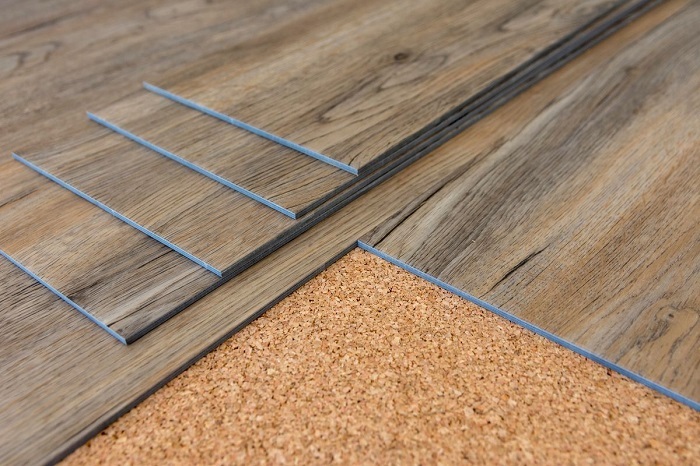
Because vinyl plank flooring snaps together edge to edge, it may be put over existing flooring without the need for glue or nails. Vinyl plank flooring is a popular faux wood flooring alternative. It is scratch and stain resistant since it may be strengthened with urethane.
According to HomeAdvisor, vinyl plank flooring installation costs range from $881 to $3,336, with a national average of $2,029. Vinyl plank flooring ranges from $2.50 to $5 per square foot, with premium vinyl plank flooring costing between $5 and $12. Vinyl plank flooring costs far more than vinyl sheet flooring, which can cost anywhere from $0.50 to $2 per square foot.
Professional vinyl flooring installers generally charge about $36 per hour for labour or $3 to $10 per square foot for materials, not adding the cost of the job. Vinyl flooring is popular among homeowners in planks, sheets, or tiles because it is water-resistant, cost-effective, low-maintenance, long-lasting, robust, and pleasant underfoot.
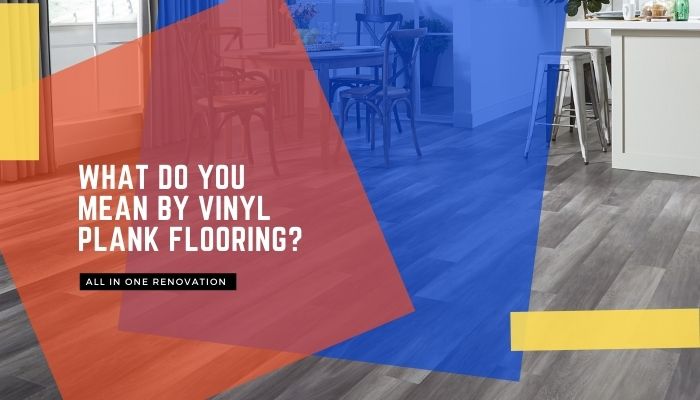
Vinyl planks come in various thicknesses, with thicker planks costing more but being easier to install. Vinyl plank flooring is intended to snap together, eliminating the need for nails or glue. Thinner boards are more difficult to click together and install, increasing labour expenses substantially.
Vinyl planks are a great alternative to hardwood flooring since they're waterproof and low-maintenance and appear like natural wood. They also perform well as a floating floor over a concrete subfloor. Luxury vinyl planks are a higher-end type of flooring. The boards are sturdy and feature a long-lasting, robust top coating.
Luxury vinyl planks feature more realistic wood grain and look to be made of natural hardwood. They also include a click-locking system and may be used on any subfloor.
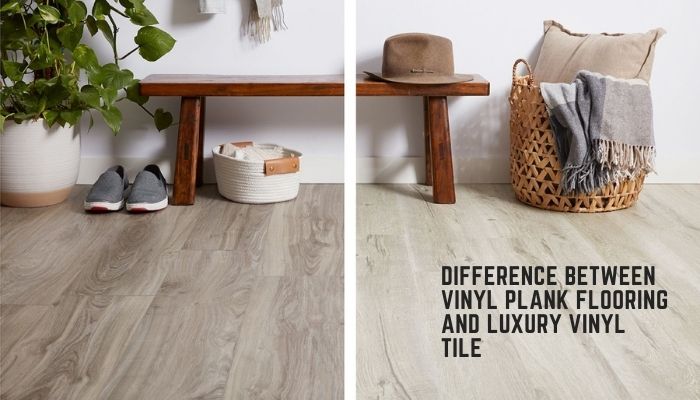
Luxury vinyl tiles, like vinyl planks, come in a variety of thicknesses. Vinyl tile is a durable flooring option that is ideal for high-moisture locations. Because it contains embossed graphic patterns, the tile form successfully simulates stone or wood tiles.
It features a thicker top layer and may be urethane-treated for increased scratch and stain resistance. Vinyl tiles are less difficult to repair than planks and sheets of vinyl. The flooring's size and design determine the cost of luxury vinyl tile.
Vinyl sheet flooring is amongst the most cost-effective flooring options available. Vinyl sheet flooring is available in 6 or 12 foot wide precut sheets or rolls. Certain varieties of sheet flooring must be bonded simply on the edges, while others must be entirely glued down.
The price per square foot ranges from $0.50 to $2. Sheet vinyl is also stain-, scratch-, and water-resistant. It's an excellent choice for high-moisture locations, and it's also easier to install than vinyl planks. Vinyl sheet flooring has the disadvantage of being difficult to repair because the entire sheet must be removed.
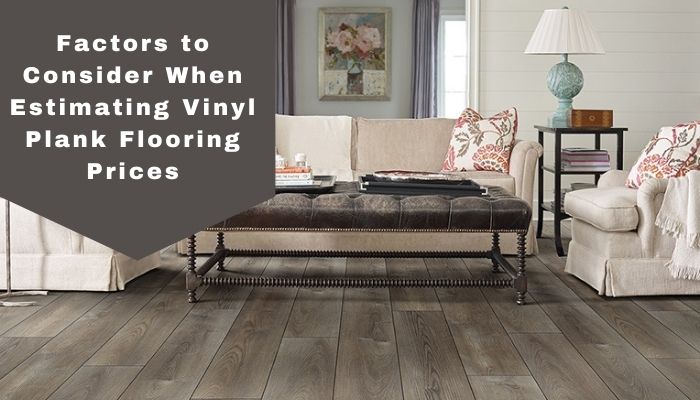
Numerous factors determine the cost of installing vinyl plank flooring. Due to labour expenses in your region, materials, quality, geographic location, installation technique, plank thickness, and core structure.
Vinyl plank flooring is installed at around $36 per hour by a vinyl flooring professional. Not considering the cost of the flooring supplies, this works out to $3 to $10 each hour. Because of the cost of labour in your location, labour prices may differ from the usual. Labour expenses are generally greater in major cities than in more rural regions of the country.
The final cost of the flooring installation will be influenced by the quality of the vinyl materials used. Colour and pattern are printed on a sheet of paper adhered to the top layer of vinyl, but below the completed surface is printed vinyl flooring. This flooring comes in various quality levels, with a better quality coming at a higher price point.
Most printed sheet vinyl, vinyl composition tile (VCT), and plank vinyl costs between $1 and $5 per square foot. Colour granules are driven through the top layer of vinyl to create inlaid vinyl flooring. Compared to printed vinyl flooring, this approach adds greater depth, complexity, and texture to the floor.
This method is used to create realistic stone and wood designs in luxury plank vinyl and tile. The cost of inlaid vinyl flooring ranges from $5 to $12 per square foot.
Your location influences the entire cost of installing vinyl plank flooring. Depending on the cost of moving and delivering materials, labour costs and material prices will differ from the national average. Increasing labour expenses are usually a result of higher living costs.
The method used to install vinyl plank flooring might impact the entire cost of the job. Plank flooring may be installed in three different ways: floating, peel-and-stick, and glue-down. Because the glue-down approach takes longer and requires more effort, it is the most costly alternative. The most cost-effective installation option is a floating floor.
Because of their thickness, high-end vinyl planks are more costly. The plank and wear layer will be more durable and long-lasting if they are thicker. Although 5 millimetres is a suitable thickness, 8 millimetres is optimum.
Planks with a thickness of fewer than 3 millimetres should only be utilized in regions with little foot activity. The worn layer should have a thickness of at least 12 mils (a thousandth of an inch wide). A thickness of about 20 mils or thicker is recommended for busy households and high-traffic areas.
The core of vinyl plank flooring is either flexible or stiff. When exposed to direct sunshine, flexible core vinyl flooring is prone to warping and bending. To guarantee the optimum installation, it requires a flat and smooth subfloor.
Vinyl flooring with a rigid core is a sturdy and long-lasting solution. It is more expensive because of the additional hard layer, but it is simple to maintain. Rigid core boards have a solid centre, giving them a more natural appearance. It's available in various textures, colours, and patterns to mimic the look of hardwood and vinyl.
It's more durable and cushioned than other vinyl flooring options. One of the most significant benefits of rigid vinyl planks is that they are entirely waterproof. Tough vinyl flooring comes in two kinds, with costs ranging from $3 to $7.
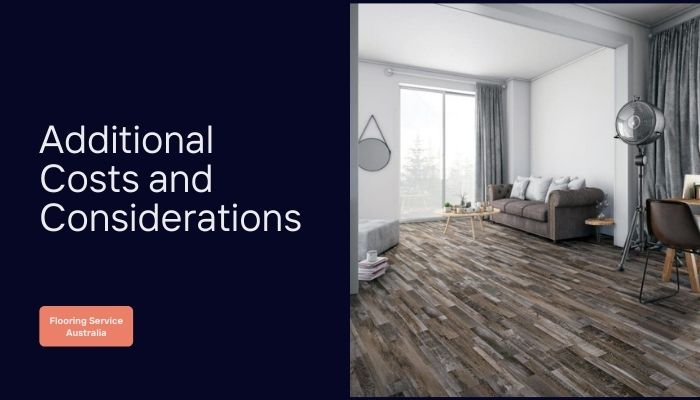
When budgeting for the cost of installing vinyl plank flooring, there will be extra pricing elements and considerations. These services include removing old flooring, installing underlayment, trimming, designing, constructing stairs, and guaranteeing.
The expense of removing the old flooring is around $32 per hour. If you want to replace the flooring in a 2,500-square-foot home, it might take up to 16 hours and cost $512. A new floor costs roughly $36 per hour to install and might take several days.
If you choose a non-floating floor, the work may take longer to complete, with labour expenses approaching $5,000. If the current flooring was put down with an adhesive installed in the 1980s or before, the bond might contain asbestos. Call a specialist to get it tested so that it can be removed appropriately.
Certain vinyl flooring specialists recommend the use of underlayment beneath vinyl flooring. If you want to minimize noise and make the surface more pleasant, you should use an underlayment. The average cost per square foot is $0.50. Underlayment is not required for thicker vinyl flooring that is floated.
After vinyl flooring has been laid, trim and moulding are used to disguise gaps along the walls. By tying the flooring and the rest of the space together, it creates a cohesive aesthetic. Some homeowners may keep the original trim and pay for the work to rebuild it, which costs around $36 per hour.
Purchase new trim, which costs around $320 for a 100- to 200-square-foot space and up to $620 for a 400- to 500-square-foot area. The trim type and the amount of room covered may range from the national average.
Vinyl plank flooring is obtainable in a wide range of styles, patterns, and colours. The patterns and colours may fade over time because the design is printed on the top layer. Some boards may need to be substituted in the future, especially in high-traffic areas.
The cost of installing vinyl planks in bespoke patterns will rise. Custom designs will need additional planning, new materials, and time.
Installing vinyl plank flooring on stairs takes a more extended amount of time and effort. The boards will need to be cut to size, and the edges will need to be trimmed to cover them. More trimming means more money spent on supplies.
When you realize that vinyl boards cannot be resurfaced, investing in a vinyl flooring guarantee may be well worth the money. Some vinyl plank flooring manufacturers provide a material warranty, and respectable contractors will stand behind their work.
There are three ways to install vinyl plank flooring, each with its own set of advantages.
A floating floor is the cheapest option of the three at the foot of the labour cost range. A floating floor need not be glued or fastened to the subfloor since it clicks together edge to edge. It is not necessary to remove the existing base, which can assist save money.
The back of peel-and-stick vinyl planks has an adhesive that adheres to the subfloor. The installation of the vinyl planks on the flooring is simple, but the preparation is not. Vinyl planks that peel and stick are a flexible core product.
Flexible core flooring requires a firm and even subfloor to attach well; otherwise, it will flex and distort if the subfloor is not precisely level. For this installation method, peel-and-stick vinyl planks are in the middle of the labour price range.
The most costly installation method is glueing down individual vinyl boards. Glue-down installations are expensive due to their labour-intensive nature. Keep in mind that glue-down vinyl plank installation costs are comparable to the cost of engineered hardwood flooring. If you want low-VOC vinyl flooring, be aware that the adhesive used to apply it is generally high in VOCs, making this installation process unsuitable for the environment.
It may be demanding to determine a new style of flooring for your house, with so many alternatives available, including additional composite options like laminate flooring, comparing the benefits and drawbacks of different flooring solutions. Vinyl plank flooring has been a popular choice among homeowners for various reasons, including the fact that it closely resembles the natural appearance of stone and wood.
You can achieve the beauty of hardwood without the cost of vinyl plank flooring. Vinyl plank is particularly good at mimicking many types of wood flooring. Vinyl plank flooring is popular among homes because it is less expensive to install than hardwood and does not require special care.
Waterproofing is one of the most significant advantages of vinyl plank flooring. Pooling water on the vinyl plank floor, on the other hand, should be avoided since it can soak through and harm the subfloor, underlayment, and insulation.
You may create whatever appearance you desire in your house with vinyl plank flooring. Whether you like lighter or darker woods, you may get the look you want without breaking the bank. Making a bespoke design in vinyl plank flooring is much less expensive than making one in hardwood.
Depending on the quality, vinyl plank flooring may be as durable as hardwood flooring at a fraction of the cost. It is suitable for use in high-traffic residential and commercial areas.
Vinyl plank flooring appeals to homeowners because the materials are less expensive and easier to install than hardwood. It's simple to replace a broken vinyl plank and match it to the existing flooring.
Installing a floating click-lock vinyl plank floor is pretty simple. Peel-and-stick and glue-down flooring are more difficult to install and take longer to complete. Keep in mind that for a smooth installation, proper subfloor preparation and correct plank cutting are required.
Vinyl plank flooring is easier to maintain when compared to other forms of flooring. Scratches and damage may be avoided with regular cleaning. Filth and debris may be removed by vacuuming or sweeping, and dirt and grime can be cut without streaks by mopping with hot water and vinegar.
Vinyl plank flooring may be installed as a do-it-yourself job. Vinyl plank flooring is one of the most specific types of flooring to install on your own. While laying the planks yourself might save money, errors can be expensive. Installation needs more than simply the flooring planks.
Keep in mind that the supplies and tools for a 500-square-foot DIY project are anticipated to cost approximately $3,300. Professional flooring installers can complete the job faster, and many respectable companies provide warranties on their work.
Installing vinyl plank flooring may be costly, and the project's additional expenditures can rapidly mount up. Buying the cheapest materials is one way to save money on vinyl plank flooring, but several ways to conserve cash without renouncing quality.
 Call Now
Call Now